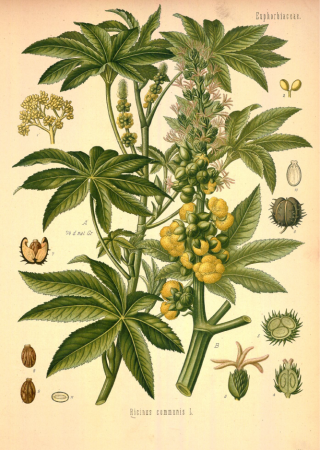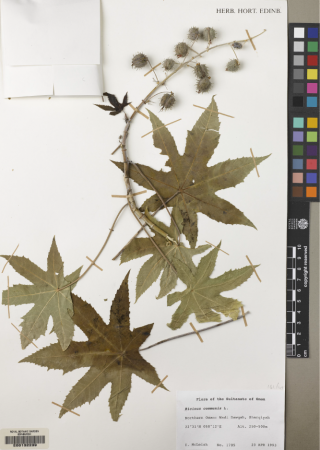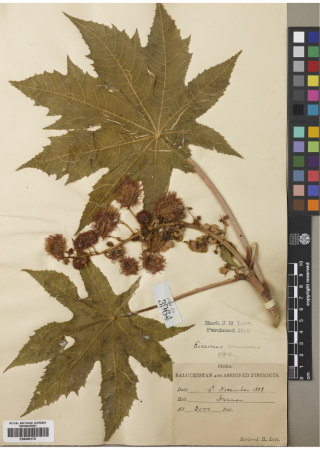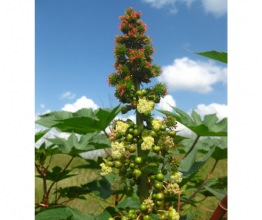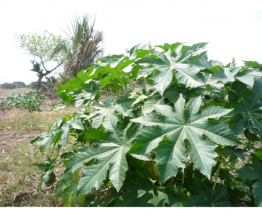Castor oil plant/ Castor Bean
- ...seeds of this plant are used to make castor oil, traditionally used as a laxative (a substance that causes diarrhea, for example, before an operation)?
- ...castor oil from this plant has found a modern application in cosmetics?
- ...castor oil (ricin) was used in 1978 to poison the Bulgarian dissident Georgi Markov, who was stabbed by the tip of an umbrella dipped in ricin while he was waiting for a bus near the Waterloo station in London, and the autopsy showed a perforated capsule lodged in his leg that probably held ricin?
- ...the effects of castor oil seeds are different for each animal, not closely dependent on body mass, where three seeds will kill a rabbit, five a sheep, six a horse, seven a pig, but up to eleven are needed for a dog?
- ...to poison a person with castor oil seeds, it is necessary that the seeds be chewed, because seeds that pass through the digestive tract without opening, or without some mechanism to disrupt their casings will not release their toxin?
- ...the creature most resistant to ricin poisoning is the duck, since eighty seeds are necessary to kill one?
Basic information:
Division: - angiosperms (Magnoliophyta)
Class - eudicots (Rosopsida)
Maximum height - 200 cm
Distribution – worldwide, originally Africa
Type of poison - toxalbumin
Distinguishing marks:
A sturdy perennial bush, 100-200 cm high. Has red stalks with long, veined and lobed leaves. Flowers are red and produce globular pods in the fall. The pods, separated into three chambers contain bean-shaped seeds around 12 mm long.
The castor oil plant is originally native to Africa, but is cultivated all over the world as a commercial or ornamental plant. It belongs to the Euphorbiaceae family. The seeds, used for making oil, contain ricin, a potent poison that damages animal tissue. A fatal dose for an adult is four to eight seeds. Symptoms of ricin poisoning can appear up to 36 hours after ingestion, but usually within two to four hours. It is characterized by a burning sensation in the mouth, nausea, vomiting, diarrhea and lethargy. Within several days, dehydration, reduced blood pressure and reduced urination appear. Without medical attention, death occurs within three to five days.

